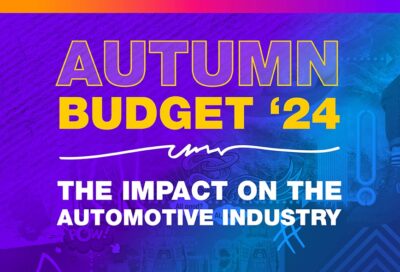The auto retail sector is buzzing with change, growth, and big attention-grabbing headlines. You’ve probably seen stats like this: vehicle registrations are up by a solid 5.5% as of July 2024, according to the Society of Motor Manufacturers and Traders (SMMT). At first glance that looks impressive. But beneath these rosy figures are there cracks in the industry’s foundation? If you take a closer look, are issues lurking beneath the surface? Is auto retail really cruising towards a healthy future or just putting on a good show?
WHAT’S REALLY DRIVING AUTOMOTIVE RETAIL GROWTH?
The growth figure is certainly eye-catching, but what’s actually fuelling it? A huge chunk of it comes down to the rise in electric (EV) and hybrid vehicle sales. It’s encouraging to see more green vehicles hitting the road, but it’s worth asking – is this surge really consumer-driven, or is it down to manufacturers’ marketing and incentives?
EVS AND HYBRIDS: REAL DEMAND OR HYPE?
Despite the EV buzz, petrol and diesel cars aren’t exactly disappearing. In fact, their market share has only dipped by a minuscule 0.27% year-on-year. It’s clear: not everyone is ready to make the switch. Persistent worries about charging networks, battery lifespan, and upfront costs keep many drivers clinging to combustion engines. So while the EV market is surging, traditional vehicles are far from obsolete.
IS THE ERA OF PETROL AND DIESEL OVER?
With the hype around EVs, you might think petrol and diesel cars are a thing of the past. But, surprisingly, that’s not quite the case. The market share for traditional internal combustion engine (ICE) vehicles has only slipped by a tiny 0.27% year-on-year. This minor decline hints that many consumers aren’t fully on board with EVs just yet. Concerns about infrastructure, reliability, and cost are still holding some people back. So, while EVs are on the rise, petrol and diesel aren’t fading away anytime soon.
TACTICAL REGISTRATIONS: BOOST OR BLUFF?
Here’s an open secret in the auto industry: some of that growth is artificially pumped up. Retailers are using “tactical registrations” to make the numbers look good. This involves registering cars purely to bolster stats, even if those vehicles aren’t going directly to end users. Plus, a significant portion of sales is driven by schemes like Motability and manufacturer-backed promotions, not organic consumer demand. Sure, it props up the figures, but does it reflect genuine market health? This tactic keeps the stats healthy but raises a question about the actual demand in the market.
AFFORDABLE EV LEASING: A GAME CHANGER?
Leasing options have opened the EV market to more people, offering down payments as low as £250. Suddenly, even the EV sceptics are tempted to make the leap. Leasing reduces worries about residual value, making EVs seem like a safer bet. But will this model remain viable if production costs for EVs spike? The future of this trend isn’t guaranteed, and it could shape how the EV market evolves.
THE MARKET’S ROLLERCOASTER RIDE: SHIFTING DYNAMICS
The auto retail sector has seen some wild shifts over the past three years. Here’s a quick snapshot of the sector’s shifting dynamics:
- Post-Lockdown Rebound: Pent-up demand caused a surge as factories ramped up production.
- Supply-Demand Imbalance: With limited supply, prices for new and used cars soared.
- 2024’s Oversupply: The pendulum has swung the other way, with oversupply and waning demand causing turbulence.
Each phase has brought its own challenges and opportunities, pushing auto retailers to rethink their strategies. It’s a bumpy ride.
AGENCY MODELS IN AUTO RETAIL: THE FUTURE OR A FAD?
The agency model – where dealerships act as agents for manufacturers rather than independent sellers – has been touted as the future of auto retail. It promises cost savings and streamlined operations. But the reality has been mixed. While some brands have jumped on board, others are struggling to adapt.
Our industry insights suggest that the agency model could benefit consumers through better pricing, but only if dealerships and manufacturers can find a way to make it work.
CHALLENGES AHEAD: WHAT’S NEXT FOR 2025 AND BEYOND?
Looking forward, the auto retail industry faces some significant hurdles. Here’s a snapshot of the biggest challenges looming on the horizon:
- EV Profitability: With tighter regulations and zero-emission vehicle (ZEV) targets, manufacturers are feeling the heat to make EVs profitable.
- Streamlining the Network: Brands are aiming to cut costs by reducing their dealer networks, which could put pressure on some dealers.
- Demand Sustainability: Tactical registrations and promotional channels are keeping 2024’s numbers strong, but they’re short-term solutions. The industry needs a more sustainable way to maintain demand.
THE BIGGER PICTURE
At Cooper Parry, we’ve kept a close eye on these industry shifts. Over the last 18 months, we’ve seen a clear trend towards leaner dealer networks. Auto brands are betting on agency models to create efficiencies, but this transition has been rocky. Not every player in the industry is fully on board, and it’s clear that some still have a long way to go.
A REALITY CHECK FOR AUTO RETAIL
So, where does this leave us? While the 5.5% rise in vehicle registrations makes for a nice headline, the reality is a bit more complex. EV and hybrid sales are growing, which is a good sign for sustainability, but tactical registrations and leasing offers are inflating the numbers. As the industry heads towards 2025, the real test will be whether this growth is sustainable or just all smoke and mirrors.
Get in touch to discuss the above.






















